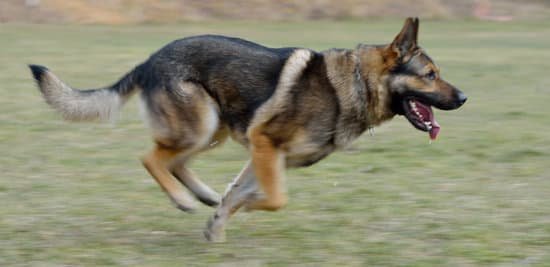Training dog collars are an essential tool for pet owners looking to effectively train their furry companions. Whether it’s for obedience training, correcting behavioral issues, or simply teaching new commands, the right training dog collar can make all the difference in your dog’s learning journey. Understanding their purpose and benefits is crucial in ensuring successful training outcomes for your beloved pet.
Choosing the right training dog collar can be a daunting task with the variety of options available on the market. From choke chains to electronic collars, each type serves a different purpose and has its own set of advantages and disadvantages. In this article, we will provide a comprehensive comparison of the types of training dog collars to help you make an informed decision that best suits your dog’s needs.
Properly fitting and adjusting a training dog collar is just as important as choosing the right type. A poorly fitted collar can cause discomfort or even injury to your dog, while a properly fitted one ensures maximum effectiveness during training sessions. By understanding how to fit and adjust the collar correctly, you can ensure that your dog remains safe and comfortable while wearing it.
Types of Training Dog Collars
When it comes to training dog collars, there are several different types to choose from, each with their own unique features and benefits. Understanding the differences between these collars is essential in choosing the right one for your dog’s specific training needs. In this section, we will provide a comprehensive comparison of the most common types of training dog collars available on the market.
Flat Buckle Collars
Flat buckle collars are the standard collar that most dogs wear daily. They are simple and easy to use, and are often used for identification purposes. While they may not be designed specifically for training, they can still be effective for basic obedience training.
Martingale Collars
Martingale collars, also known as limited slip collars, are designed to prevent dogs from slipping out of their collars. They are made with two loops; one that goes around the dog’s neck and another that tightens when the dog pulls. Martingale collars are often used for training dogs who tend to pull on the leash or have a tendency to escape traditional collars.
Prong Collars
Prong collars, also referred to as pinch collars, consist of a series of metal links that tighten around the dog’s neck when tension is applied. While prong collars can be controversial and should only be used under the guidance of a professional trainer, they can be effective for controlling strong or stubborn dogs who have not responded well to other training methods.
In addition to these types of training dog collars, there are also head halters, choke chains, and electronic or “shock” collars. Each type has its own set of advantages and limitations which should be carefully considered before making a decision on which collar is best suited for your dog.
Choosing the Right Training Dog Collar for Your Dog’s Needs
When it comes to choosing the right training dog collar for your furry friend, it’s important to consider their individual needs and temperament. There are several types of training dog collars to choose from, each with its own set of benefits and considerations. Here’s a comprehensive comparison of the most common types:
Types of Training Dog Collars:
- Martingale Collars: These are designed for dogs with narrow heads, such as Greyhounds, and provide gentle control without choking.
- Prong Collars: Also known as pinch collars, these are designed to provide more effective control for larger or stronger dogs but should be used under the guidance of a professional trainer.
- Shock Collars: These deliver an electric shock as a form of correction and are controversial due to ethical concerns and potential misuse.
- Citronella Collars: These release a burst of citronella spray when activated by barking, providing a deterrent for excessive vocalization.
When choosing the right training dog collar for your dog, it’s crucial to consider their size, breed, behavior issues, and your preferred training methods. For example, while some collars may be effective for correcting specific behaviors such as excessive barking or pulling on a leash, others may be more suitable for positive reinforcement-based training techniques. It’s always best to consult with a professional trainer or behaviorist to determine the most appropriate solution for your specific pet.
In addition to considering your dog’s individual needs and behavior patterns, it’s important to ensure that the chosen collar fits properly and is adjusted correctly. Improperly fitted training dog collars can cause discomfort or injury to your pet and may not effectively address the desired behavior issues. Taking the time to fit and adjust the collar according to manufacturer guidelines will ensure both safety and effectiveness in your training efforts.
Ultimately, selecting the right training dog collar involves careful consideration of your pet’s unique characteristics and behaviors. By understanding the purpose and benefits of each type of collar and consulting with professionals as needed, you can make an informed decision that supports successful training outcomes for you and your furry companion.
How to Properly Fit and Adjust a Training Dog Collar
When it comes to using training dog collars, proper fitting and adjustment are crucial for the safety and effectiveness of the training tool. Whether you are using a choke chain, prong collar, or electronic collar, ensuring that it fits your dog correctly is essential. Improperly fitted collars can lead to discomfort, injury, and ineffective training.
To properly fit a training dog collar, follow these steps:
1. Measure your dog’s neck: Use a soft tape measure to accurately measure your dog’s neck circumference. Add 2 inches to this measurement to ensure that the collar will fit comfortably without being too tight.
2. Choose the right type of collar: Based on your dog’s size and behavior, select the appropriate type of training dog collar. For example, smaller dogs may benefit from a martingale collar while larger, strong-willed dogs may require a prong or e-collar for effective training.
3. Adjust the fit: Once you have chosen the right collar for your dog, it’s important to adjust it properly. For martingale and buckle collars, ensure that you can fit two fingers comfortably between the collar and your dog’s neck. For choke chains and prong collars, consult with a professional trainer to learn how to use these types of collars safely.
Properly fitting and adjusting a training dog collar is essential for the comfort and safety of your dog during training sessions. It is recommended to seek guidance from a professional trainer when using more advanced training collars such as prong collars or e-collars for best results in behavior modification with positive reinforcement techniques.
Training Techniques With Dog Collars
When it comes to training your dog using dog collars, it’s important to understand the different techniques you can use to effectively communicate with your furry friend. Positive reinforcement and corrections are two common training methods, and each has its own benefits and drawbacks.
Positive Reinforcement
Positive reinforcement involves rewarding your dog for good behavior with treats, praise, or toys. When using a training dog collar in conjunction with positive reinforcement, you would give a gentle tug on the leash when your dog exhibits the desired behavior, followed by a reward.
This method is effective because it helps your dog associate good behavior with positive outcomes. By using rewards to reinforce desired behaviors, you can build a strong bond of trust with your pet. Positive reinforcement is also less likely to cause stress or anxiety in your dog compared to punitive measures.
Corrections
On the other hand, corrections involve using the training dog collar to administer a correction when your dog exhibits undesirable behavior. This could be a quick tug on the leash or a verbal cue such as “no” or “stop.” The idea is to interrupt the unwanted behavior and redirect your dog’s attention towards something more appropriate.
While corrections can be effective in stopping unwanted behaviors, they should be used sparingly and with caution. Overuse of corrections can lead to fear or anxiety in your pet and may damage the trust between you and your furry friend.
By understanding both positive reinforcement and correction techniques, you can choose the best approach for training your dog with a training dog collar based on their individual needs and temperament. Remember that consistency and patience are key components of successful training.
Common Mistakes to Avoid When Using Training Dog Collars
When using training dog collars, it’s important to be mindful of certain common mistakes that can undermine the effectiveness of these tools. One of the most common mistakes is using the wrong type of collar for your dog’s specific needs.
It’s essential to consider your dog’s size, breed, and behavior issues when selecting a training collar. For example, a choke chain may not be suitable for a small or sensitive dog, while a head halter may not be effective for a strong, large breed.
Another mistake to avoid is improper fitting and adjustment of the training collar. If the collar is too loose, it may fail to deliver appropriate feedback to your dog during training sessions. On the other hand, if it’s too tight, it can cause discomfort or even injury. It’s crucial to follow the manufacturer’s guidelines for fitting and adjusting the collar properly to ensure both safety and effectiveness.
Additionally, a common mistake that pet owners make when using training dog collars is inconsistent or incorrect use. Inadequate or inconsistent application of training techniques can lead to confusion and frustration for your dog. It’s important to educate yourself on proper training methods and seek professional guidance if needed to ensure that you are using the collar in a way that promotes positive reinforcement rather than punishment.
| Common Mistakes | Impact |
|---|---|
| Using wrong type of collar | Can cause discomfort or fail to address behavior issues properly |
| Improper fitting and adjustment | May result in discomfort or injury for the dog |
| Inconsistent or incorrect use | Can lead to confusion and frustration for your dog |
Safety Tips for Using Training Dog Collars
Training dog collars are effective tools for training and managing a dog’s behavior. However, it is essential to prioritize safety when using these collars. Here are some safety tips for using training dog collars:
- Proper fit: It is crucial to ensure that the training dog collar fits your dog properly. A collar that is too loose may not effectively communicate the desired training signals, while a collar that is too tight can cause discomfort or injury to your dog.
- Supervision: When using a training dog collar, always supervise your dog. Leaving the collar on unsupervised can lead to accidents or injuries, especially if the collar gets caught on objects.
- Regular checks: Regularly inspect the condition of the training dog collar. Look for any signs of wear and tear, such as fraying or weakening of the material. If you notice any damage, replace the collar immediately to avoid potential safety hazards.
In addition to these safety tips, it’s important to use positive reinforcement techniques in conjunction with training dog collars to ensure a safe and effective training process for your furry companion.
| Safety Tips | Details |
|---|---|
| Proper Fit | Ensure that the collar fits properly to avoid discomfort or injury |
| Supervision | Always supervise your dog when wearing the collar to prevent accidents or injuries. |
| Regular checks | Inspect the condition of the collar regularly and replace if damaged. |
Real-Life Success Stories
Training dog collars have been proven to be effective tools in transforming problematic behaviors in dogs. Many pet owners have shared their success stories on how these training collars have helped their dogs become more obedient and well-behaved. These collars are designed to provide gentle guidance and reinforcement, and when used correctly, they can bring about positive changes in a dog’s behavior.
One real-life success story involves a dog named Max who had a tendency to pull on his leash during walks. His owner, Sarah, was struggling to control him and feared that he would injure himself or others with his erratic behavior. After consulting with a professional trainer, Sarah decided to use a head halter training collar on Max.
With consistent training and positive reinforcement techniques, Max gradually learned to walk calmly on the leash without pulling. Thanks to the training collar, Max is now able to enjoy peaceful walks with his owner, and Sarah no longer worries about his safety.
Another success story comes from Mark, whose dog Bella had a habit of excessive barking. This behavior was not only disruptive but also caused tension with Mark’s neighbors. Determined to address the issue, Mark tried different training methods before eventually using a citronella spray bark collar.
With proper training and the use of the collar, Bella learned to control her barking habits, much to the relief of Mark and his neighbors. The training collar not only improved Bella’s behavior but also strengthened the bond between them.
These real-life success stories demonstrate how training dog collars can make a significant impact on a dog’s behavior when used properly and with patience. It is important for pet owners to understand their options and seek professional guidance when using these tools for training purposes.
Bonus Tips and Tricks for Effective Training With Dog Collars
In conclusion, training dog collars can be a valuable tool in the process of training and disciplining your furry friend. From understanding their purpose and benefits to choosing the right type for your dog’s needs, it’s important to make an informed decision when selecting a training dog collar. Properly fitting and adjusting the collar is crucial to ensure your dog’s comfort and safety.
When it comes to using training techniques with dog collars, positive reinforcement should always be the first approach. Corrections should only be used sparingly and with caution. It is important to avoid common mistakes when using training dog collars, such as using the collar as a punishment rather than a teaching tool. Safety tips must also be observed at all times to prevent any harm or injury to your pet.
Real-life success stories have shown how training dog collars have transformed problematic behaviors in dogs, proving that with patience and consistency, significant improvements can be achieved. Additionally, incorporating bonus tips and tricks for effective training with dog collars can further enhance the overall success of the learning process for both the owner and their canine companion. Ultimately, with proper knowledge and responsible usage, training dog collars can greatly contribute to harmonious interactions between dogs and their owners.
Frequently Asked Questions
What Type of Collar Is Best for Dog Training?
The best type of collar for dog training depends on the individual dog and their specific needs. Generally, flat buckle collars, martingale collars, and front-attach harnesses are recommended for positive reinforcement training.
Are Training Collars Good or Bad for Dogs?
Training collars can be both good and bad for dogs, depending on how they are used. Positive reinforcement methods promote good behavior without causing harm, while aversive training collars can potentially cause physical and psychological harm to the dog.
Do Vets Recommend Training Collars?
Vets have differing opinions on training collars. Some may recommend them for certain behavioral issues if used correctly and in conjunction with positive reinforcement techniques. However, many vets also caution against the use of aversive training collars due to potential negative effects on the dog’s well-being.

Welcome to the blog! I am a professional dog trainer and have been working with dogs for many years. In this blog, I will be discussing various topics related to dog training, including tips, tricks, and advice. I hope you find this information helpful and informative. Thanks for reading!





